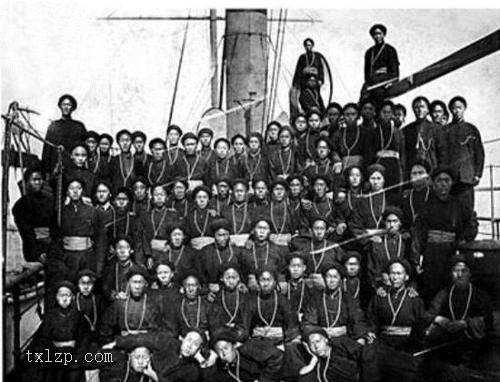Period:Eastern Zhou dynasty Production date:5thC BC-4thC BC (circa)
Materials:jade, nephrite,
Technique:pierced, incised,
Subjects:arms/armour
Dimensions:Height: 5.20 centimetres
Description:
Bead. Pendant. In the shape of a male figure holding a sword and wearing a turban. Made of pierced jade (white.brown).
IMG
![图片[1]-bead; figure BM-1945-1017.86-China Archive](https://chinaarchive.net/Eastern Zhou dynasty/Jades/mid_00164789_001.jpg)
Comments:Rawson 1995:Designs incorporating human heads did not survive long into the Eastern Zhou and a quite separate practice followed. In the Eastern Zhou and Han periods the principal use of the human figure was as a bead. These beads were components of pendants or other ornaments, and the figures depicted, though obviously of high rank, were none the less truly human. This change to the employment of figures in a functional, almost secular, context was paralleled by the use of figures as supports for frames and lamps.Many of the jades depicting humans are small and some are almost flat. A rare exception is a carved figure in the Winthorp Collection, Harvard university, which, although not drilled, may have been set in or on something else. Both this piece and the other Eastern Zhou and Han period figures provide useful information on dress and fashion becuase, despite the rather subordinate role of the pieces concerned, many of the figures are well attired. A similar figure, carrying a sword too, is in the Winthorp Collection. See also BM 1945.1017.38 and 39.
Materials:jade, nephrite,
Technique:pierced, incised,
Subjects:arms/armour
Dimensions:Height: 5.20 centimetres
Description:
Bead. Pendant. In the shape of a male figure holding a sword and wearing a turban. Made of pierced jade (white.brown).
IMG
![图片[1]-bead; figure BM-1945-1017.86-China Archive](https://chinaarchive.net/Eastern Zhou dynasty/Jades/mid_00164789_001.jpg)
Comments:Rawson 1995:Designs incorporating human heads did not survive long into the Eastern Zhou and a quite separate practice followed. In the Eastern Zhou and Han periods the principal use of the human figure was as a bead. These beads were components of pendants or other ornaments, and the figures depicted, though obviously of high rank, were none the less truly human. This change to the employment of figures in a functional, almost secular, context was paralleled by the use of figures as supports for frames and lamps.Many of the jades depicting humans are small and some are almost flat. A rare exception is a carved figure in the Winthorp Collection, Harvard university, which, although not drilled, may have been set in or on something else. Both this piece and the other Eastern Zhou and Han period figures provide useful information on dress and fashion becuase, despite the rather subordinate role of the pieces concerned, many of the figures are well attired. A similar figure, carrying a sword too, is in the Winthorp Collection. See also BM 1945.1017.38 and 39.
© Copyright
The copyright of the article belongs to the author, please keep the original link for reprinting.
THE END



![[Qing Dynasty] British female painter—Elizabeth Keith, using woodblock prints to record China from the late Qing Dynasty to the early Republic of China—1915-China Archive](https://chinaarchive.net/wp-content/uploads/2022/11/image-191x300.png)

